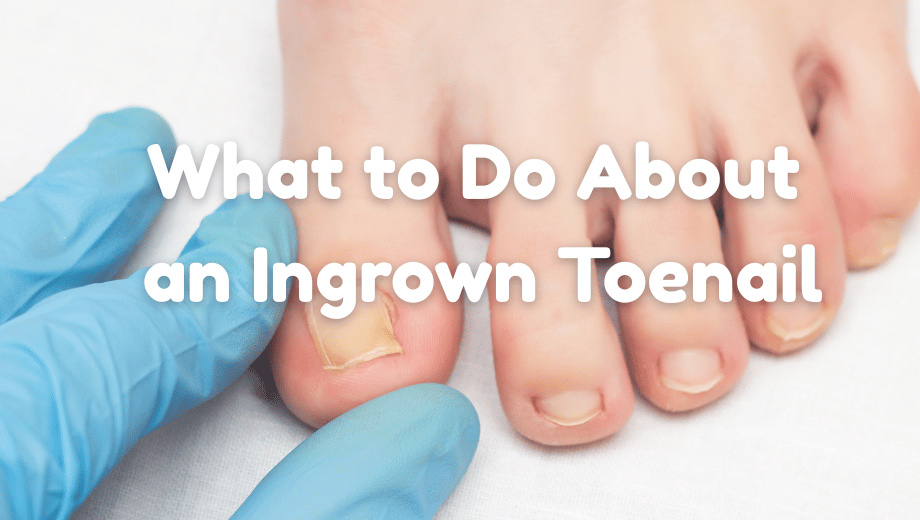Ingrown toenails are one of the most common and frustrating foot problems. While many cases can be treated at home, more advanced situations sometimes require medical attention, including ingrown toenail surgery. Knowing when to manage it on your own and when to see a specialist can make all the difference in recovery and long-term foot health.
For people who spend hours on their feet, wear tight footwear, or have medical conditions such as diabetes, ingrown toenails can quickly become more than just a nuisance. By learning the proper care techniques, recognizing warning signs, and making preventive changes, you can address the problem early and avoid serious complications.
What Can Cause Ingrown Toenails
An ingrown toenail usually develops due to pressure on the nail or improper trimming. If toenails are cut too short or if the edges are rounded, they are likely to grow into the skin. Narrow-toe shoes or high heels that force the toes together can worsen the problem. Injuries, such as a stubbed toe or repeated impact from sports, may lead to abnormal nail growth.
Genetics plays a role as well. Some people naturally have nails that curve more than average, which makes them more likely to press into the surrounding skin. Understanding the cause is the first step to preventing a recurring issue.
Symptoms to Watch For
Early signs of an ingrown toenail often include tenderness, redness, and swelling along one side of the toe, usually the big toe. As the nail continues to grow into the skin, pain may increase, and walking can become difficult. If left untreated, the infection can develop. Pus, warmth, and more intense swelling are signs the toe needs medical evaluation.
Recognizing symptoms early allows you to intervene before the condition worsens. Mild cases often respond to at-home care, while more severe symptoms suggest the need for professional treatment.
At-Home Care and Relief
For mild ingrown toenails without infection, simple home remedies can help. To soften skin and ease pain, soak your foot in warm water with Epsom salts multiple times each day. To help the nail grow in the right direction, gently raise its edge and insert a tiny piece of cotton or dental floss.
Over-the-counter pain relievers and topical antibiotic ointments may provide additional support. Comfortable, open-toed shoes or sandals reduce pressure on the affected toe. However, if pain continues or infection develops, it’s crucial to stop self-treatment and consult a healthcare professional.
Medical Treatment Options
When home care is not enough, a podiatrist or foot specialist can provide more effective treatment. You could either trim the nail or remove some of it to alleviate the pressure. For chronic or severe cases, permanent solutions such as partial nail removal, combined with chemical treatment to prevent regrowth, may be recommended.
Ingrown toenail surgery is typically a quick outpatient procedure, performed under local anesthesia. Recovery is relatively fast, and patients can often walk the same day, though they may need to limit strenuous activity for a short period.
Preventing Future Ingrown Toenails
Preventive care is the best long-term strategy. Trim nails straight across rather than rounding the corners, and avoid cutting them too short. Choose shoes with a wide toe box to give your toes room. Good foot hygiene, such as keeping feet clean and dry, also reduces risk.
Athletes and people who work in environments that put stress on their feet should be especially careful. Regular foot checks, especially after long days of standing or walking, help catch small problems before they escalate.
When to See a Doctor
Some people should seek professional help at the first sign of an ingrown toenail. This includes individuals with diabetes, poor circulation, or compromised immune systems, as infections can become serious very quickly. If redness spreads, swelling increases, or pus develops, don’t delay medical attention.
Recurring ingrown toenails are another reason to consult a podiatrist. Chronic cases may require long-term treatment strategies to keep the problem from returning. Professional advice ensures safe, effective care that protects overall foot health.
Let’s Recap
Ingrown toenails may seem like a minor issue, but ignoring them can lead to major discomfort and complications. Early care, smart preventive habits, and timely medical attention make a big difference. By taking care of your feet and treating problems promptly, you can stay mobile, pain-free, and focused on daily activities without being slowed down by toe pain.




